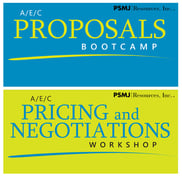 Don’t let the winds of change blow your firm’s marketing program off course.
Don’t let the winds of change blow your firm’s marketing program off course.
We recently launched our annual planning cycle. So it’s not surprising that an agenda item for our upcoming management team meeting is reviewing progress on the five-year strategic plan. Our response to changing market dynamics creates new challenges and opportunities that need to be mapped into our strategic plan.
While some traditional markets continue to be flat or show slow growth, new service areas offer potential to expand our reach. We will re-energize the team during our next meeting, and adjust our strategic marketing approach to keep pace. Here are some topics that will form the basis of our discussion.
Validate future market and customer needs – this is an ongoing task, and a good place to start by revisiting existing research from previous planning sessions. With respect to new markets, we’ll generate baseline demographics— how big is the market, what customers buy these services, and how are they purchased. Back-office research will be augmented by customer intelligence from interviews of senior-level personnel within client organizations. This is where we engage business development staff and client leaders to validate research findings.
Evaluate competitive forces – the marketing program must consider who we’re up against— large companies, niche players, or teams and joint ventures that formed to pursue specific markets or opportunities. Bankruptcies, mergers, and acquisitions change the competitive landscape as new firms enter and leave markets. We leverage the routine contract review process to keep pace with competitive forces. Who better to provide insight into other firms than project managers and staff that are in the field every day? This resource must be tapped.
Identify strategic partners – one of our new offerings, operations and maintenance services, has competitors that are just too large and experienced for us to tackle on our own. So we developed a strategic alliance to bid upcoming work and solidify a resume for the future. The best alliances are exclusive and complementary. We perform a lot of due diligence when choosing potential bedfellows; the term of some contracts is five to ten years, so we may be in the relationship for a long time.
Determine how to package, or re-package, services – this is a variable within promotion, one of the “4 Ps” of a standard marketing mix (product, price, promotion, and place). There are many possibilities: Should we bundle our services or do they stand alone? Is it a single service or a solution set? Do we want to be a ‘contractor’ or ‘consultant’?
For instance, the broad spectrum of emergency services could be built on the platform of a firm that does the work in the field, or one that performs up-front planning and analysis. By narrowing the market we will have a more focused suite of competitors, and will be able to price our work competitively. This will also dictate the relative volume of work and associated profit we can expect.
Build your reputation and re-shape the brand – this step happens with a combination of marketing and project execution. Every firm needs to clearly articulate a value proposition to the market and targeted customer base. Our century-long reputation as an A-E firm has to be molded to be consistent with entry into new markets where we will act more like a contractor. Effectively leveraging our new brand and work performed by internal operating companies will give us the flexibility we need.
Measure success – many people are familiar with the phrase, “What gets measured gets done.” In these competitive times, we have no choice but to measure progress in order to justify continued expenditures. We must take a critical look at metrics to ensure that we allocate resources wisely. A draft list for consideration is market share, customer penetration, diversification of our service portfolio, and return on marketing dollars through incremental revenue gains.
If you are experiencing similar market changes in your firm, these thoughts might provide a framework to evaluate your approach. Remember, this is a cyclical process. The objective is to make necessary adjustments, not overhaul your basic strategy. As new changes occur to shape our markets and offerings, we will revisit many of the above topics. What we need now is new energy, a focused strategy, and a clear path to the end of the year.
About the Author: Wally Hise is vice president of federal marketing for HDR Engineering, Inc. (Omaha,NE).
 Getting new work for your firm is one thing and getting properly compensated for that work is another, however they each function as two sides of the same coin. This spring, PSMJ is running its ever-popular A/E/C Proposals Bootcamp and A/E/C Pricing and Negotiations Workshop back to back - in the same location. Now you can experience both programs, one which flows naturally into the other, for a reduced price, in one comprehensive package.
Getting new work for your firm is one thing and getting properly compensated for that work is another, however they each function as two sides of the same coin. This spring, PSMJ is running its ever-popular A/E/C Proposals Bootcamp and A/E/C Pricing and Negotiations Workshop back to back - in the same location. Now you can experience both programs, one which flows naturally into the other, for a reduced price, in one comprehensive package.



